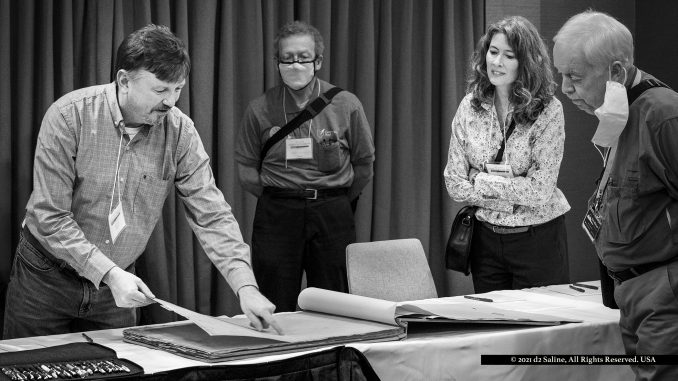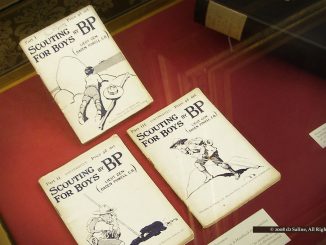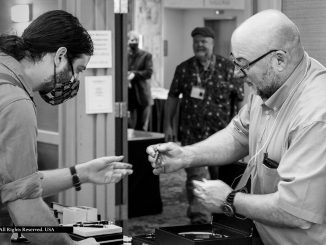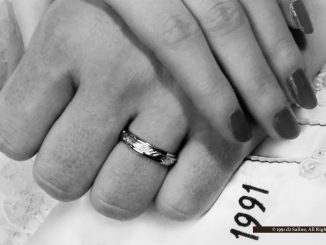
When Jonathan Veley was asked at his table during The Ohio Pen Show last week to produce a mechanical pen produced in, say, the year 1916, he readily did so — pulling samples out of well-organized inventory set off within arms-reach. [1,2]
As himself a collector, historian, and owner of an enterprise well-stocked with vintage pencil leads, his expertise was among the higher end of sellers here. But by no means exclusive. [3]
That’s the opening ante to customer satisfaction here. And it is where this article picks up from Part 2, published yesterday. [4]
As much as anything, this interaction served as reminder that brick-and-mortars specialized in so many varieties of options for fine writing have not been obsoleted in areas of value-added customer touchpoints. Locals with spontaneous access to Atlas Stationers in The Windy City, Bertram’s Inkwell in Maryland, Fahrney’s in DC, and Crazy Alan’s Emporium in Chapel Hill, are to be envied. [5-8]
Real-world shows have grown in importance as means to fill the void left by stores that have been lost.
Mr Veley himself wrote about this milieu late last summer on his blog, as last bastion pen shows took devastating hits through COVID-19 lock-downs. Another human experience among those too seldom highlighted or respected. From an emotional perspective, it was a hard read at many points. [9-12]
He also wrote about the value of “collaboration and interaction,” unparalleled against in-person meetings at pen shows.
One area of inquiry that found its way to the pages of The Leadhead’s Pencil Blog, Volume 7, began to unpack “original” mechanical pencil development work by Parker Pen Company, founded in 1888. Here, he wrote, “after decades of ignoring mechanical pencils as companions to the company’s pens, Parker realized by 1921 that Sheaffer and Wahl had come out of nowhere to command a significant market share at Parker’s expense …. [13,14]
Did Parker reinvent the wheel, developing its own pencil and all the equipment and expertise it needed to make them on a large scale overnight?
Or did it achieve its necessary end via whole cloth purchase of a going concern?
From a broader perspective on history of the technology, a relatively recent question. As recently as 2014, however, technology expert Clive Thompson took center stage to validate the premise that “if we stopped handwriting and started typing more, we all became stupider; we didn’t think as well. [15-19]
… I really like pencils. I really like handwriting. I also like typing. And so I really got interested in this question, as to is there one that’s better than the other?
What’s the war between handwriting and typing? Which one is better for your thinking?
So, I spent the summer diving into the research, and what I discovered is that it isn’t really so much one being better than the other. It’s really, which one is suited to what task.
That made the question of mechanical pencil development work that took place one hundred years past not only interesting from a “getting the history right” perspective, but also important as subject matter that needs to receive more focus in the year 2021.
That’s exactly what was done on the first afternoon that The Ohio Pen Show was open to public admissions. Seeming to have picked up where he’d left off in Volume 7, Jonathan Veley seized the opportunity when he’d become aware of it to acquire a book containing one-hundred, seventy full-sized, original blueprints “divulging previously unknown details concerning production dates, model numbers and specifications for all Parker models from the 1920s through the 1940s — including experimental models.” [20]
Although he did not believe it the only copy of this material, his was one of a very small number that had been produced one-off, by hand. And it was on the verge of being destroyed when it came into his possession.
It would have undoubtedly been more convenient to share these materials in his presentation via digitized images projected from computer to screen. But that doesn’t sound like the person who wrote about the extrodinary value of in-person collaborations just two months prior.
If there’s a bigger conclusion here on top of that, it’s probably this. =Internet searches for the answer seldom result in the best answer. More often then not, you’ll have to get your fingers dirty.
Though that evidence needn’t be a result of using the mechanical pencil with which you’ve chosen to take notes — assuming you’ve made a properly informed selection before acquiring it.
References
- The Leadhead’s Pencil Blog (home page).
- “Books by Jonathan Veley” Legendary Lead Company.
- Legendary Lead Company (home).
- “Ohio Pen Show 2021, Part 2a: Mechanical pencils have their own great stories, down to grades of lead grade and barrel sizes” Dell Deaton (November 16, 2021) Saline Journal.
- Atlas Stationers (home page).
- Bertram’s Inkwell (home page).
- Fahrney’s Pens (home page).
- Office Supplies and More – Crazy Alan’s Emporium (Facebook Page).
- “An Ancient Rhythm” Jonathan A Veley (August 10, 2021) The Leadhead’s Pencil Blog.
- “A Timeline of COVID-19 Developments in 2020” (January 1, 2021) American Journal of Managed Care.
- “Coronavirus Disease 2019 (COVID-19)” CDC: Centers for Disease Control and Prevention.
- “Novel Coronavirus Reports” CDC.
- “World of Parker” Parker Pen Company.
- “Early Parker Duofold Pencils” George Kovalenko (February 17, 2015) Fountain Pen History, Hand & Pen.
- “Evolution of the Pencil 105 – 2021 | History of the Pencil, Documentary” Explain Like I’m Five” (December 15, 2021) YouTube.
- “History of the Mechanical Pencil – Inventor of Mechanism” History of Pencils.
- “How do mechanical pencils work?” Branch Education (September 20, 2021) YouTube.
- “Journalist, author and tech expert Clive Thompson to deliver Carleton convocation” (February 17, 2021) Carleton.
- “Clive Thompson ‘How The Way You Write Changes the Way You Think” Hubspot (February 3, 2015) YouTube.
- “Schedule of Events: Seminar – ‘Parker’s pencil blueprint archive” Jonathan Veley (November 12, 2021) The Ohio Pen Show.



